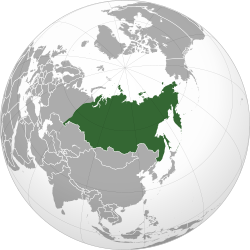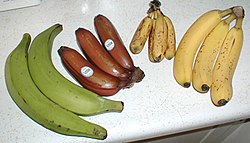Template:Transclude random excerpt/testcases Source: en.wikipedia.org/wiki/Template:Transclude_random_excerpt/testcases
| This is the template test cases page for the sandbox of Template:Transclude random excerpt. to update the examples. If there are many examples of a complicated template, later ones may break due to limits in MediaWiki; see the HTML comment "NewPP limit report" in the rendered page. You can also use Special:ExpandTemplates to examine the results of template uses. You can test how this page looks in the different skins and parsers with these links: |
Random cricket article from list
[edit]If it's always Cricket bat, be suspicious!
| {{Transclude random excerpt}} | {{Transclude random excerpt/sandbox}} |
|---|---|
 The Sydney Riot of 1879 was an instance of civil disorder that occurred at an early international cricket match. It took place on 8 February 1879 at what is now the Sydney Cricket Ground (at the time known as the Association Ground), during a match between New South Wales, captained by Dave Gregory, and a touring English team, captained by Lord Harris. The riot was sparked by a controversial umpiring decision, when star Australian batsman Billy Murdoch was given out by George Coulthard, a Victorian employed by the Englishmen. The dismissal caused an uproar among the spectators, many of whom surged onto the pitch and assaulted Coulthard and some English players. It was alleged that illegal gamblers in the New South Wales pavilion, who had bet heavily on the home side, encouraged the riot because the tourists were in a dominant position and looked set to win. Another theory given to explain the anger was that of intercolonial rivalry, that the New South Wales crowd objected to what they perceived to be a slight from a Victorian umpire. The pitch invasion occurred while Gregory halted the match by not sending out a replacement for Murdoch. The New South Wales skipper called on Lord Harris to remove umpire Coulthard, whom he considered to be inept or biased, but his English counterpart declined. The other umpire, future prime minister Edmund Barton, defended Coulthard and Lord Harris, saying that the decision against Murdoch was correct and that the English had conducted themselves appropriately. Eventually, Gregory agreed to resume the match without the removal of Coulthard. However, the crowd continued to disrupt proceedings, and play was abandoned for the day. Upon resumption after the Sunday rest day, Lord Harris's men won convincingly by an innings. (Full article...) | Lua error in Module:Excerpt/portals/sandbox at line 393: bad argument #1 to 'ipairs' (table expected, got nil). |
Random article from a list that's mainly rubbish
[edit]Should always be Cat or Dog
| {{Transclude random excerpt}} | {{Transclude random excerpt/sandbox}} |
|---|---|
| Untitled may refer to: (Full article...) | Untitled may refer to: (Full article...) |
Random article from a list that's totally rubbish
[edit]Error: no valid article
| {{Transclude random excerpt}} | {{Transclude random excerpt/sandbox}} |
|---|---|
| Untitled may refer to: (Full article...) | Untitled may refer to: (Full article...) |
All articles
[edit]| {{Transclude random excerpt}} | {{Transclude random excerpt/sandbox}} |
|---|---|
|
A banana is an elongated, edible fruit—botanically a berry—produced by several kinds of large treelike herbaceous flowering plants in the genus Musa. In some countries, cooking bananas are called plantains, distinguishing them from dessert bananas. The fruit is variable in size, color and firmness, but is usually elongated and curved, with soft flesh rich in starch covered with a peel, which may have a variety of colors when ripe. It grows upward in clusters near the top of the plant. Almost all modern edible seedless (parthenocarp) cultivated bananas come from two wild species – Musa acuminata and Musa balbisiana, or hybrids of them. (Full article...) An apple is a round, edible fruit produced by an apple tree (Malus spp.). Fruit trees of the orchard or domestic apple (Malus domestica), the most widely grown in the genus, are cultivated worldwide. The tree originated in Central Asia, where its wild ancestor, Malus sieversii, is still found. Apples have been grown for thousands of years in Eurasia before they were introduced to North America by European colonists. Apples have cultural significance in many mythologies (including Norse and Greek) and religions (such as Christianity in Europe). (Full article...)  | Lua error in Module:Excerpt/portals/sandbox at line 393: bad argument #1 to 'ipairs' (table expected, got nil). |
Template in image caption not processed correctly
[edit]Caption should be:
Right to left:
- The Capture of the 'Nuestra Señora de Covadonga' (20 April 1743)
- The Battle of Fontenoy (11 May 1745)
- The Battle of Hohenfriedberg (4 June 1745)
- The Siege of Bergen op Zoom (14 July – 18 September 1747)
Actual caption shows asterisks:
| {{Transclude random excerpt}} | {{Transclude random excerpt/sandbox}} |
|---|---|
|
The War of the Austrian Succession was a European conflict fought between 1740 and 1748, primarily in Central Europe, the Austrian Netherlands, Italy, the Atlantic Ocean and Mediterranean Sea. Related conflicts include King George's War in North America, the War of Jenkins' Ear, the First Carnatic War, and the First and Second Silesian Wars. Its pretext was the right of Maria Theresa to succeed her father, Emperor Charles VI, as ruler of the Habsburg monarchy. France, Prussia, and Bavaria saw it as an opportunity to challenge Habsburg power, while Maria Theresa was backed by Britain, the Dutch Republic, and Hanover, collectively known as the Pragmatic Allies. As the conflict widened, it drew in other participants, among them Spain, Sardinia, Saxony, Sweden, and Russia. (Full article...) | Lua error in Module:Excerpt/portals/sandbox at line 393: bad argument #1 to 'ipairs' (table expected, got nil). |
Another image caption problem
[edit]Image caption should be:
Administrative Siberian Federal District
Geographic Siberia
North Asia, greatest extent of Siberia
Actual caption does not display:
| {{Transclude random excerpt}} | {{Transclude random excerpt/sandbox}} |
|---|---|
 | Lua error in Module:Excerpt/portals/sandbox at line 393: bad argument #1 to 'ipairs' (table expected, got nil). |
List
[edit]Show a list
| {{Transclude random excerpt}} | {{Transclude random excerpt/sandbox}} | ||||
|---|---|---|---|---|---|
|
Untitled may refer to: (Full article...)
|
Untitled may refer to: (Full article...)
|
References
[edit]This section contains references and notes. It should be empty. If anything appears here then a template may need to be removed from the transcluded article.


